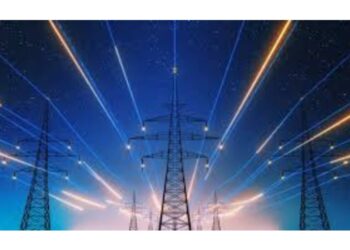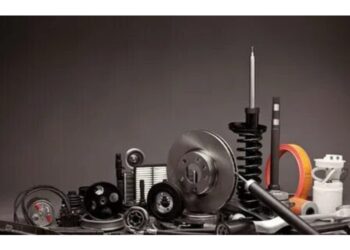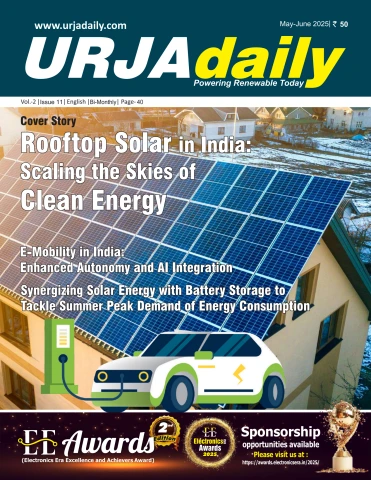As the world intensifies its efforts toward sustainability, the energy sector, responsible for over 73% of global emissions, is undergoing a remarkable transformation. According to the International Energy Agency (IEA), renewable energy accounted for nearly 29% of global electricity generation in 2022, with projections to reach 50% by 2030. Aluminium is pivotal to this transition, with its use in renewable energy applications like solar panels, wind turbines and others. For example, in wind turbines, it can reduce system weight by up to 40%, which not only improves energy efficiency but also lowers production and operational costs, according to the International Aluminium Institute (IAI). Furthermore, once put into use, Aluminium is 100% recyclable, contributing to a circular economy and reducing the carbon footprint of energy systems. Its lightweight, strong, and corrosion-resistant properties enable significant advancements in clean energy technologies, underscoring Aluminium’s importance in building a sustainable future.
Boosting Solar Power Performance with Extruded Aluminium
Extruded aluminium products are essential to the development and technological enhancement of solar power plants. The production of photovoltaic solar panels employs the incorporation of extruded aluminium products. As a matter of fact, aluminium materials make up about 85% of all installations made in the PV industry, including frames and mounting systems. Alloy 6063, known for its excellent extrudability and surface finish, is commonly used in solar panel frames, providing structural support and corrosion resistance. Aluminium frames also provide excellent structural support to solar panels, while the extruded mounting systems simplify installation by allowing the panels to be adjusted for maximum sunlight. Its components have significantly reduced solar installations’ overall weight, leading to a 20% increase in installation speed and a 15% reduction in installation costs, according to the Aluminium Association. Extruded aluminium products are widely used in large-scale solar farms to enhance structural strength, thermal conductivity, and corrosion resistance. These attributes significantly improve performance and long-term durability, increasing the efficiency of solar energy production. Moreover, the metal can be easily shaped into highly efficient reflectors and is resilient against shocks compared to glass mirrors; therefore, it is highly suitable for solar applications. The International Renewable Energy Agency (IRENA) estimates that growth in global solar capacity through 2050 will require an additional 160 million tonnes of Aluminium.
Leveraging Aluminium Extrusion in Hydropower Projects
The design of hydropower infrastructures depends largely on aluminium extruded products, which impart strength as well as light weight to several components required in the hydroelectric mechanisms. Be it turbine blades or structural elements, Aluminium provides the strength and corrosion resistance needed for prolonged exposure to water and environmental factors. Tubes made from this tough and corrosion-resistant metal ensure the longevity of systems under the constant onslaught of water and elemental changes during the transfer of water from the reservoirs to turbines. Alloy 5083, noted for its exceptional resistance to seawater corrosion, is often used in such applications, ensuring the longevity of the systems. Aluminium’s excellent thermal conductivity also justifies its use in busbars and bus ducts. While steel usually develops magnetic fields around conductors, an incidence that leads to energy losses and a temperature rise, Aluminium’s non-magnetic nature helps avoid such issues. According to a report by the International Aluminium Institute (IAI), using Aluminium in hydropower systems has led to a 25% improvement in energy efficiency due to reduced energy losses and better thermal management. The versatility of Aluminium has also made it possible to develop complex profiles and shapes, thus helping engineers optimise designs for better efficiency and performance.
The Impact of Aluminium Extruded Products on Wind Energy
Extruded aluminium products have continuously gained importance in wind energy applications. These materials add significantly to the efficiency of the wind turbines. The excellent strength-to-weight ratio has made lightweight aluminium alloys standard in the construction of the blades of wind turbines. Alloy 6082, offering high strength and good corrosion resistance, is often used in constructing wind turbine components, enhancing performance and durability. It enables manufacturing bigger and more efficient blades capable of producing more energy from the wind. According to the European Aluminium Association, using Aluminium in turbine blades has resulted in a 20% increase in energy output due to the ability to design longer, lighter blades that operate more efficiently. Moreover, in turbine tower platforms, aluminium extrusions are used extensively, and their resistance to corrosion means durability and long-term stability for wind energy systems. Furthermore, aluminium extrusions are ideally suited for walkways, stairs, railings, and balustrades both within wind turbines and on floating structures, enhancing safety and accessibility while maintaining structural integrity.
The Importance of Aluminium in Electric Vehicle Batteries
Electric automotives are at the heart of a sustainable future, and their core lies in the batteries and charging infrastructure. Achieving climate objectives, such as limiting the rise in global temperature to below 1.5°C identified by the Paris Agreement, hinges on one major premise: the wide-scale adoption of BEVs (Battery Electric Vehicles). Aluminium is crucial in battery technology because of its extraordinary conductivity and lightweight, which can handle fast charging and efficiently utilise energy. Alloy 1050, with high purity and excellent conductivity, is used in battery electrode foils, making it indispensable in various kinds of batteries. A typical 60-kWh BEV battery pack uses more than 30 kilograms of Aluminium in components such as electrode foils and cell casings, making the metal indispensable in various kinds of batteries and low-cost and high-energy variants. As BEV demand surges, Aluminium’s contribution to efficient and high-performing battery systems will be instrumental in driving the transition to a greener future.
Final Say
Through innovations in the energy sector, Aluminium is driving key breakthroughs in renewable technologies critical for a sustainable future. Alloys like 6063, 5083, 6082, and 1050 are integral to solar panels, wind turbines, hydro systems, and electric vehicles, enhancing efficiency and performance. For instance, Aluminium makes up 85% of PV installations, contributes to a 20% increase in wind turbine energy output, and reduces BEV weight by up to 30%, significantly improving driving range. As the world transitions to cleaner energy, Aluminium’s role as a catalyst for innovation underscores its indispensable contribution to a greener, more resilient future.












